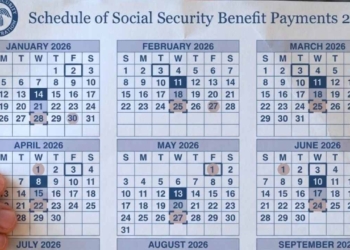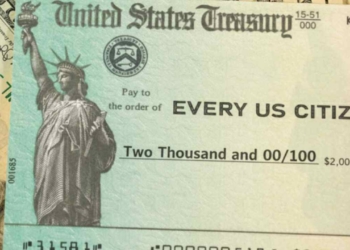As you could know so far, the Supplemental Security Income (SSI) is a federal program administered by the Social Security Administration (SSA). It is intended for people with limited financial resources, who have disabilities, or who are older than 65.
The program distributes non-work-related funds to help cover basic needs such as food, housing, and clothing. Payment amounts may vary depending on the state of residence and the beneficiary’s individual situation.
In October 2025, SSI beneficiaries experience a peculiar event in their payment schedule. They receive two deposits in the same month. This phenomenon is not due to a benefit increase or a system error. It is the result of an administrative rule established by the SSA to arrange paydays that fall on weekends or federal holidays.
The SSI calendar has these events anticipated
The rule dictates that if the first day of the month falls on a Saturday, Sunday, or holiday, the SSI payment is issued on the preceding business day. This policy aims to avoid delays in recipients receiving funds. The official SSA calendar for 2025 details these distribution dates.
October 1, 2025, falls on a Wednesday. Therefore, the October payment is distributed on its usual scheduled date. The situation changes when looking at the following month’s calendar. November 1, 2025, falls on a Saturday.
Due to regulations, the November payment will be brought forward to Friday, October 31. The direct result is that beneficiaries receive two deposits within the same month: one on October 1 and the other on October 31. Consequently, there will be no SSI disbursement in November.
This event is not unprecedented. It occurs every time the calendar’s sequence of days aligns with the first day of a month on a weekend. A recent precedent occurred in 2023. The SSA publishes these schedules in advance to allow for financial planning by those affected.
How much money to Expect in SSI deposits?
The SSI maximum amounts for 2025 set the financial framework for the double payment event in October. The base federal benefit for an individual is $967 per month. For an eligible couple, where both spouses are beneficiaries, the combined maximum payment reaches $1,450. Additionally, there is a concept known as an essential person payment, which can be awarded to a third-party caregiver, with an amount that can reach $484.
These figures become the central component of planning during the month of October. An individual receiving the individual maximum would see two deposits of $967 into their account, totaling $1,934. A couple could handle a total of $2,900 during the same period.







